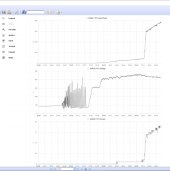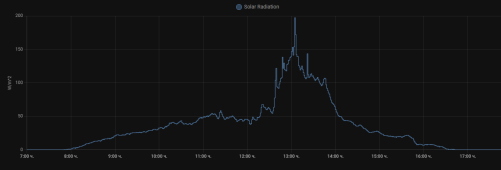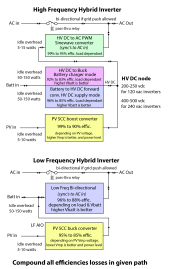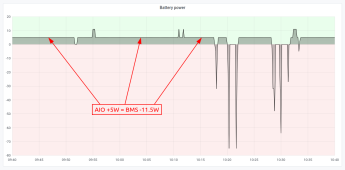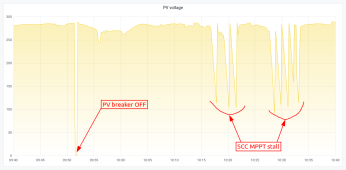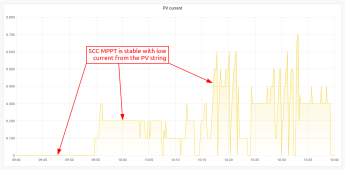Sleeper85
Sunday handyman
- Joined
- Nov 28, 2022
- Messages
- 454
Hello,
I have already posted about the behavior of my MPPT controller but a member thinks that my production is abnormal and suggested that I create a new topic.
My panels are oriented to the east on a roof with a slight slope of 15°, therefore on the blue line of the diagram below.
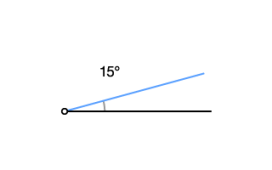
To the east is a hill and in winter the sun is visible only from 1 p.m. to 3 p.m. and at that time it is already low. (in the morning -10°C currently)
------------- 12h17 ------------------------ 14h40 ------------


Here is the ideal inclination for my city. (the worst exposure for a month of December)
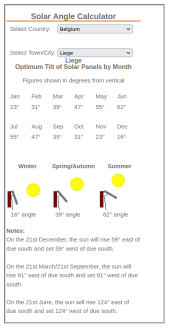
I have an EAsun SMX II 5.6kW AIO ( SRNE HF4850S80-H rebranded ) connected to Solar Assistant (more info in my signature).
String of 8 Jinko 415WC panels (STC values) :
MPPT input voltage range 120~450 VDC.
So now I have two questions:
Production of the day
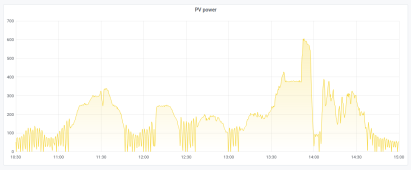
MPPT behavior at low light
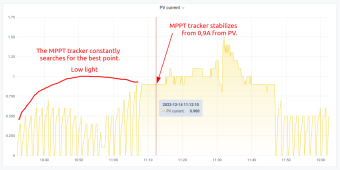
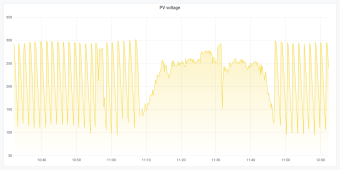

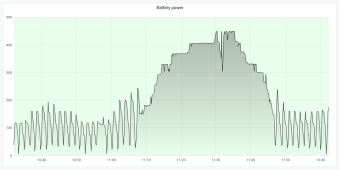

Thanks for your feedback
I have already posted about the behavior of my MPPT controller but a member thinks that my production is abnormal and suggested that I create a new topic.
My panels are oriented to the east on a roof with a slight slope of 15°, therefore on the blue line of the diagram below.

To the east is a hill and in winter the sun is visible only from 1 p.m. to 3 p.m. and at that time it is already low. (in the morning -10°C currently)
------------- 12h17 ------------------------ 14h40 ------------


Here is the ideal inclination for my city. (the worst exposure for a month of December)

I have an EAsun SMX II 5.6kW AIO ( SRNE HF4850S80-H rebranded ) connected to Solar Assistant (more info in my signature).
String of 8 Jinko 415WC panels (STC values) :
- WC = 8 x 415 = 3320WC
- Voc = 8 x 37.92 = 303.36V
- Vmp = 8 x 31,32 = 250,48V
- Imp = 13.25A
MPPT input voltage range 120~450 VDC.
So now I have two questions:
- Is having a production peak at 300W (10% before 12h without sun) abnormal given the very poor exposure of my panels in winter? (after 1 p.m. when it was sunny I peaked at 600W)
- My MPPT controller does not stabilize until I have at least 0.9A from PV, what do you think ? ( in low light the MPPT scans the voltage from high to low (90V) continuously)
Production of the day

MPPT behavior at low light





Thanks for your feedback
Last edited:



